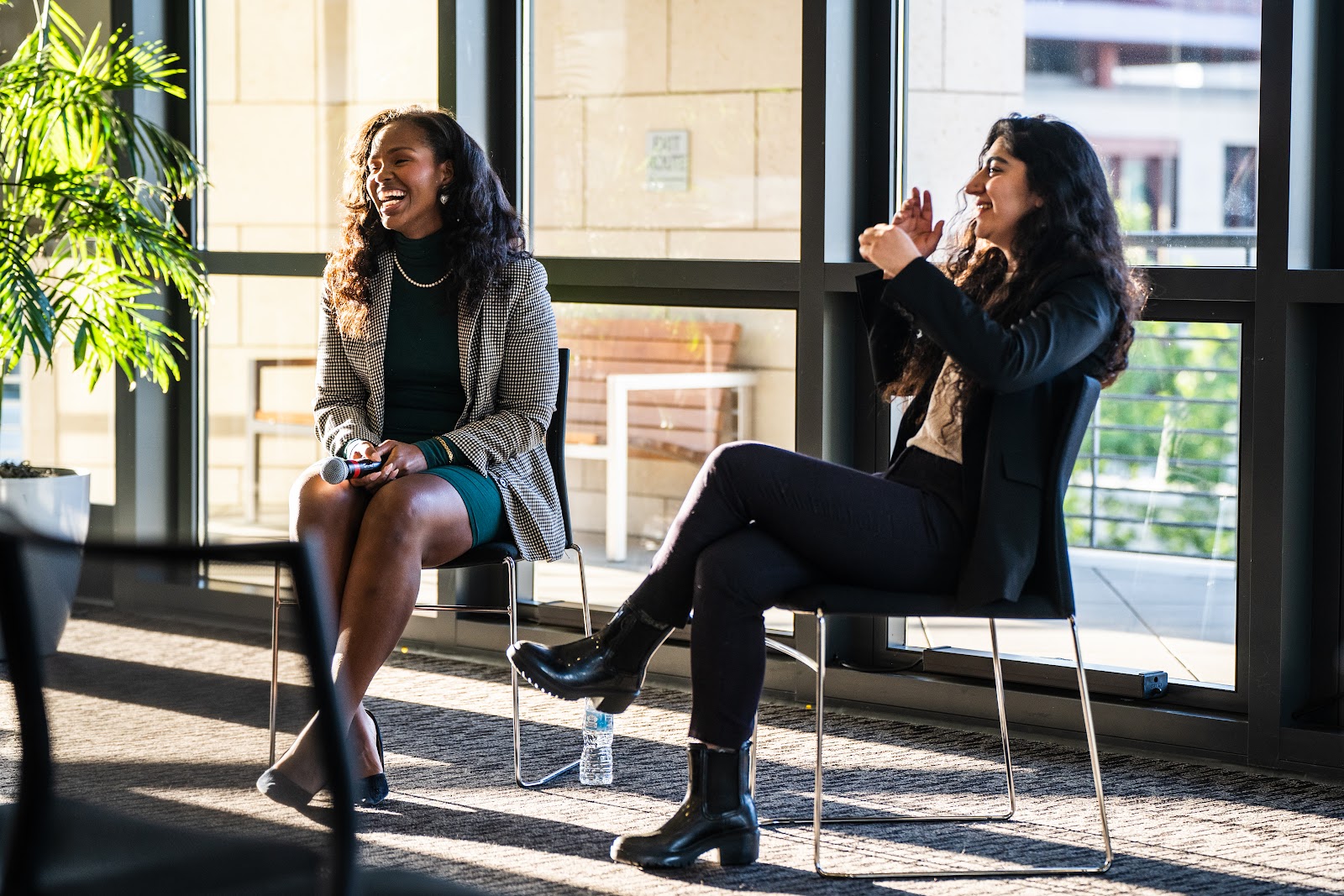Writing is made whole through conversation. But we often imagine the solitary writer chipping away at their masterpiece in an isolated corner of the world. At Wednesday’s Stegner Fellow reading, two writers reminded us that the finest writing is always inspired by human connections—from everyday conversations to deep ancestral histories.
The final Stegner Fellow reading of the year featured writers Rabia Saeed and Christell Victoria Roach. Since last November, four other readings have been held for the public, allowing first-year Stegner Fellows to share poetry and prose.
Saeed’s prose holds a “particular honesty,” said Stegner Fellow Rose Himber Howse as she introduced her peer. This authenticity was apparent in Saeed’s excerpt from her short story “Cadet College, Kohat.”
The story follows a female narrator from Kohat, Pakistan who is dating a boy named Hamza, who is “nice and decent” with a shyness that the narrator finds surprisingly empowering. As she contemplates her college life and relationships, she realizes the power she holds as a woman and a better English speaker.
Saeed’s writing is conversational and light, yet she is able to press upon difficult topics underneath the surface of her character’s life. At times, her reading was comedic; the boldness of a line, “I felt like I was made of breasts,” drew laughs from the audience. Her prose also impresses with a sense of beautiful vastness. After Hamza drops the narrator off at a girl’s hostel, she looks up to find that “the stars were so full in the sky that I began to look for the sky in the sky.”
When asked how she navigates the line between reality and fiction, Saeed explained that she begins with the familiar, writing what she knows until she reaches what she doesn’t. Drawing from her own life experiences in Kohat, she writes stories that are gripping and intimate.
Roach shared several poems that celebrated the consciousness of Black femininity, as well as her relationships with family and history. She began with an excerpt from a poem entitled “Mama Taught Me the Blues,” which described women as true founders of the Blues genre. The reading was filled with musicality—both in its content and sound. As Roach described how her mother “sang” her “into being,” every line thrummed with joy. She slowed or sped up her voice at times, giving the poem a magnetic rhythm.
Afterwards, Roach shared two more poems: “Blueswoman” and “Call and Response.” Roach has a talent for skillfully braiding her personal history with larger social movements. She affectionately dubbed herself an “archive baby”; she often dives into research first (usually in archives) before finding a personal connection that sparks her next poem.
I was struck by both writers’ humor and authentic answers to questions from the audience. When the two were asked about their writing processes, Saeed passed the mic to Roach and said, “I have to take a moment to make my laziness sound artistic.”
She then described how she writes daily, but has two-week periods of finding “true joy” and focus in her work followed by two-week periods of questioning her work.
Both writers emphasized the importance of living in conversation to effective writing. Roach’s writing inspiration comes like “lightning strikes,” which are spurred by unrelated activities such as reading the news. Saeed, on the other hand, is motivated to write after genuine chats with friends.
Writing speaks when it is connected to the community, a belief shared by both fellows. The Stegner Fellow readings demystify the writing process, reminding us to draw inspiration from everyday communities and our collective humanity.
Editor’s Note: This article is a review and includes subjective thoughts, opinions and critiques.
